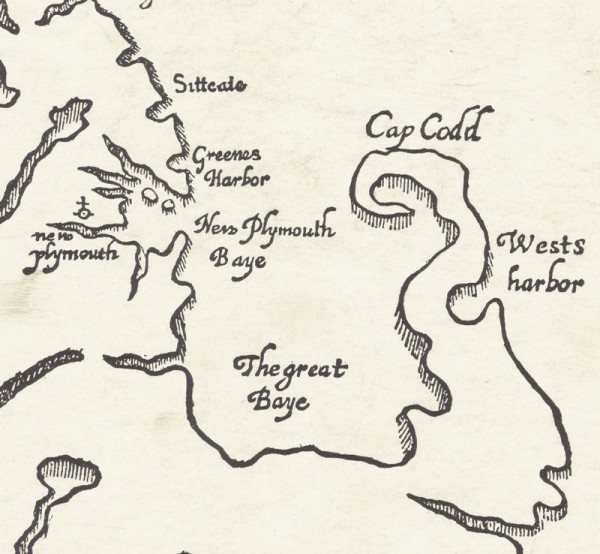
William Wood, The South part of New-England, as it is Planted this yeare, 1634 (detail), 1635. From William Wood, New Englands Prospect (London, 1634). (Courtesy, Boston Public Library.)
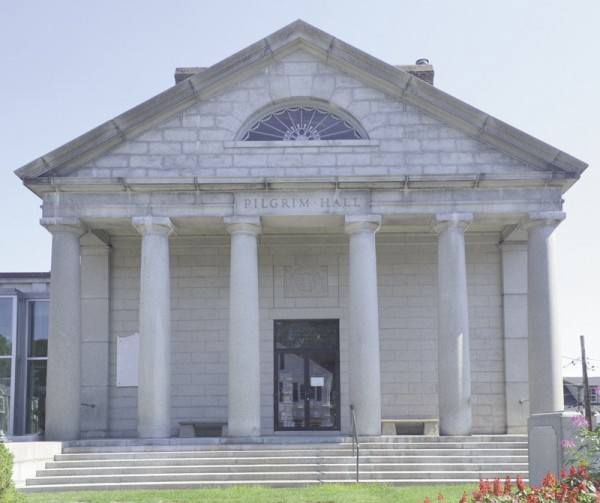
Pilgrim Hall, Plymouth, Massachusetts, 2016. (Photo, Steven Pendery.)
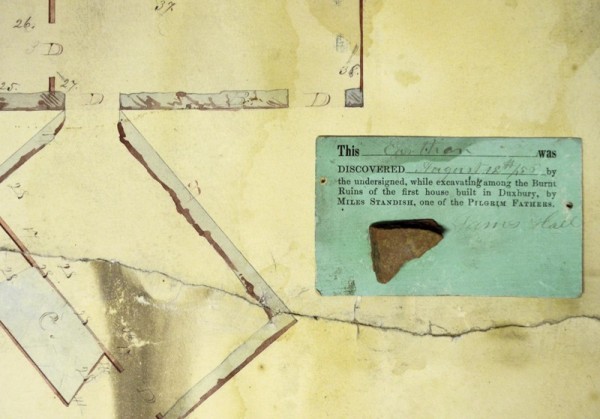
Portion of James Hall’s plan of the Miles Standish site (1856), and earthenware artifact tag from the site. Map overall 20 13/16 x 28 11/16". (Courtesy, Pilgrim Hall Museum; photo, Steven Pendery.)
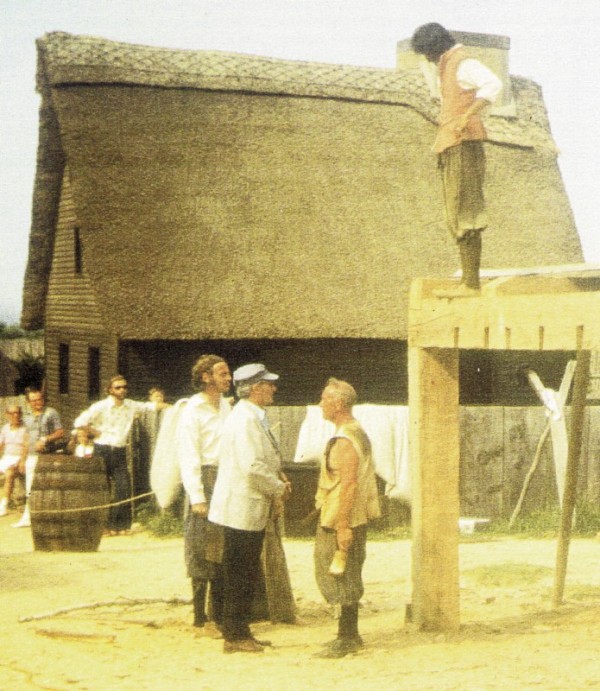
Reconstructing the ca. 1621 Billington House at Plimoth Plantation in 1973. Foreground (left to right): James Deetz, Henry Hornblower, James Blogg, Henry Glassie. (Photo, Steven Pendery.)
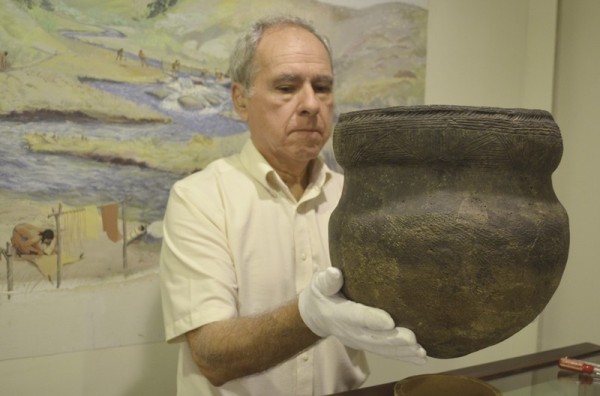
Native American vessel, Late Woodland period, ca. 1400–1600. Low-fired earthenware. H. 12 3/16". (Courtesy, Massachusetts Archaeological Society; photo, Steven Pendery.) This reconstructed vessel with zone incised decoration, which is being held by David DeMello, was found at the Nemasket site in Middleborough, Massachusetts.
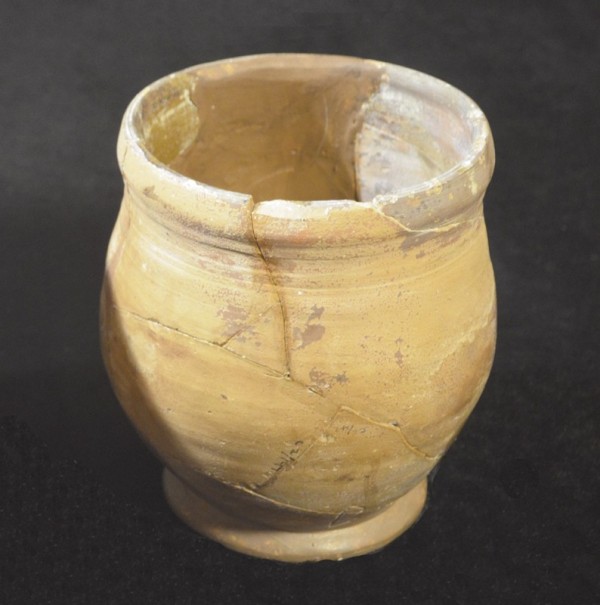
Pot or jar, Massachusetts, ca. 1650–1700. Lead-glazed earthenware. H. 5 3/4". (Courtesy, Plimoth Plantation and Marshfield Historical Commission; photo, Steven Pendery.)
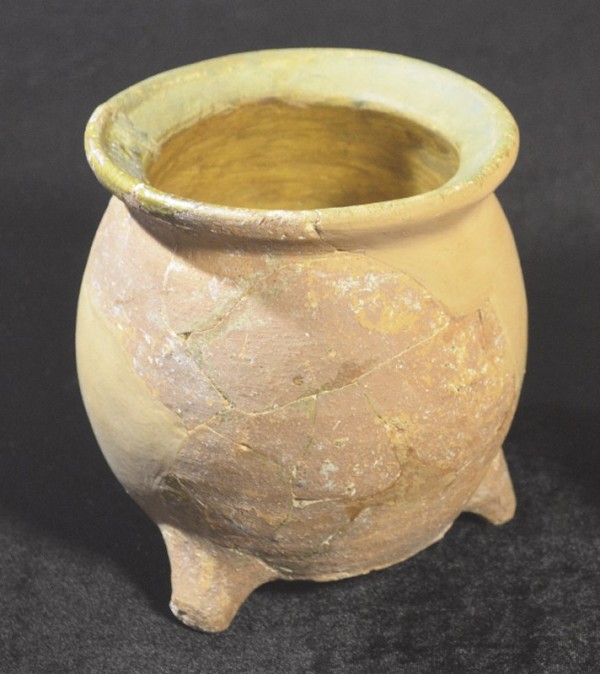
Pipkin, Bideford, Barnstaple, or Fremington, North Devon, England, ca. 1635–1650. Gravel-tempered earthenware. H. 6 3/8". (Courtesy, Plimoth Plantation; photo, Steven Pendery.)
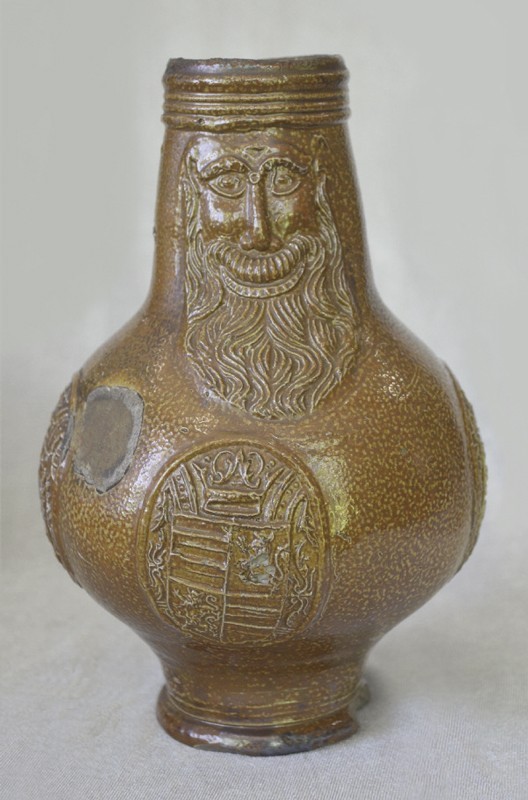
Bellarmine, Frechen, Germany, possibly late sixteenth century. H. 8 1/16". (Courtesy, Plimoth Plantation; photo, Steven Pendery.) A fragment of a Bellarmine with a similar medallion was found in 2012 on the foreshore of the River Thames in London.
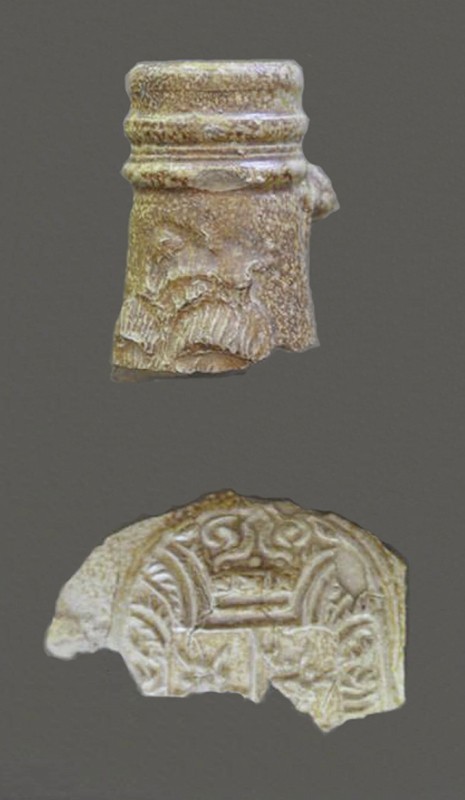
Bellarmine stoneware bottle fragments, ca. 1635–1675. L. of neck 2 3/4". (Courtesy, Plimoth Plantation; photo, Steven Pendery.)
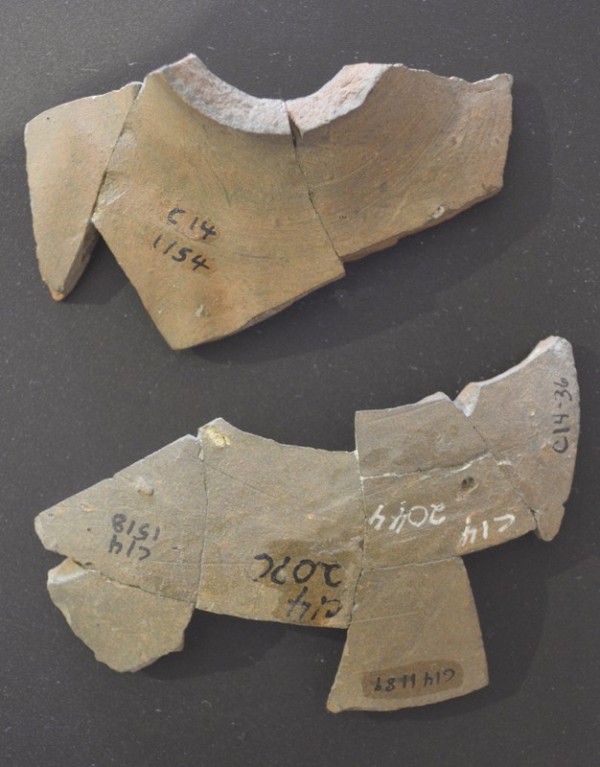
Bottle fragments, possibly Bessin-Cotentin, Lower Normandy, France, seventeenth century. Stoneware. (Courtesy, Plimoth Plantation and Marshfield Historical Commission; photo, Steven Pendery.)
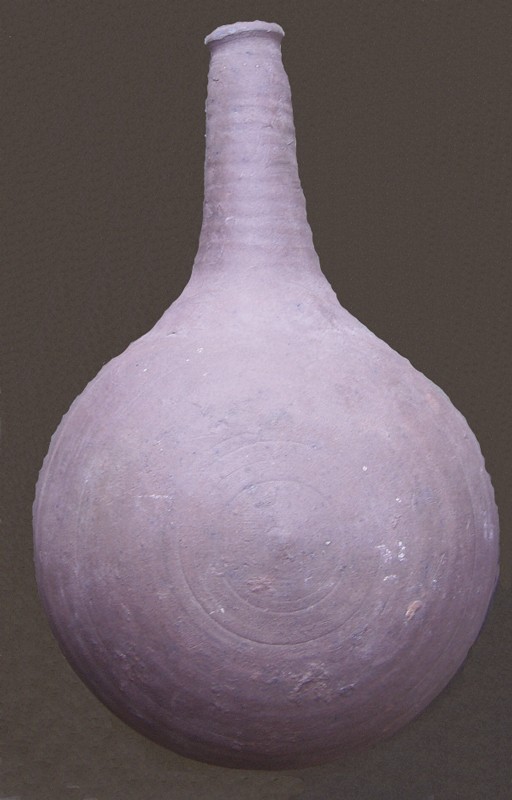
Bottle, Dieppe, France, early seventeenth century. Stoneware. H. 9 1/2". (Courtesy, Musée de Dieppe; photo, Steven Pendery.)
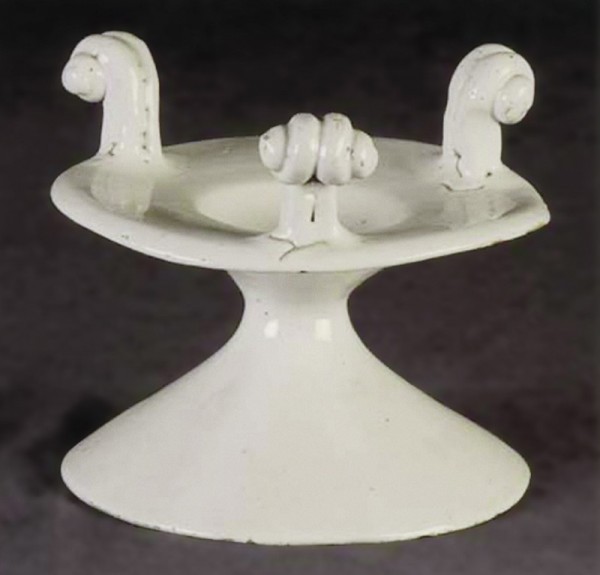
Salt, Southwark, London, England, ca. 1650–1680. White tin-glazed earthenware. H. 6". (Courtesy, Pilgrim Hall Museum.) Associated with the family of Mayflower passenger Edward Fuller.
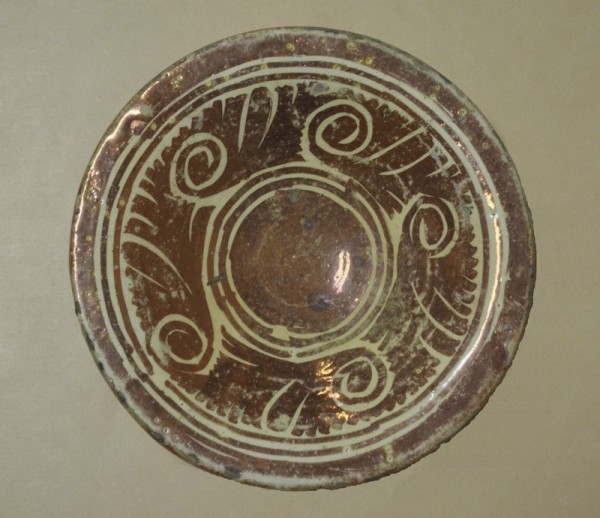
Hispano-Moresque copper luster plate, probably Manises, Valencia, Spain, ca. 1650–1700. Tin-glazed earthenware. D. 7". (Courtesy, Pilgrim Hall Museum; photo, Steven Pendery.)
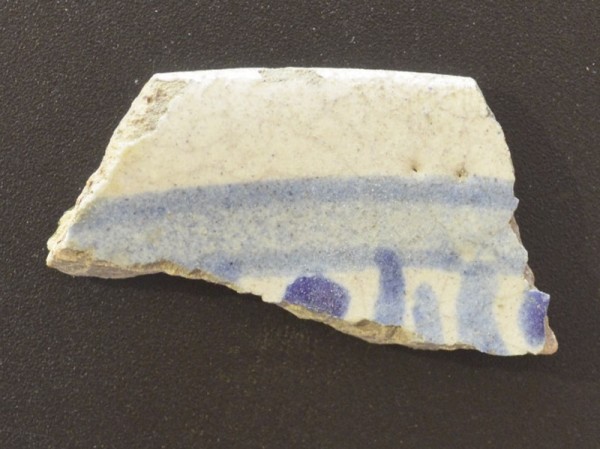
Plate fragment, Portugal, seventeenth century. Tin-glazed earthenware. H. 9/16". (Courtesy, Plimoth Plantation; photo, Steven Pendery.) Semicircular or floral decoration covered the area beneath the banded marley. This fragment was recovered from the ca. 1650–1700 Josiah Winslow site in Marshfield, Massachusetts.

Semicircular design motif of a Portuguese faiança plate found in Brazil, most likely the same design as represented on the sherd illustrated in fig. 14. (Illustration by Steven Pendery.)
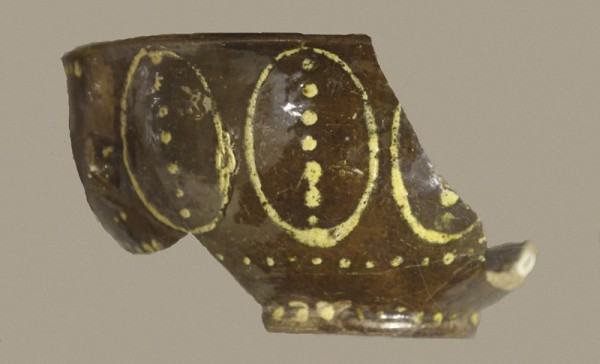
Porringer fragment, Massachusetts, ca. 1700. Slip-decorated red earthenware. H. 2 9/16". (Courtesy, National Park Service; photo, Steven Pendery.)
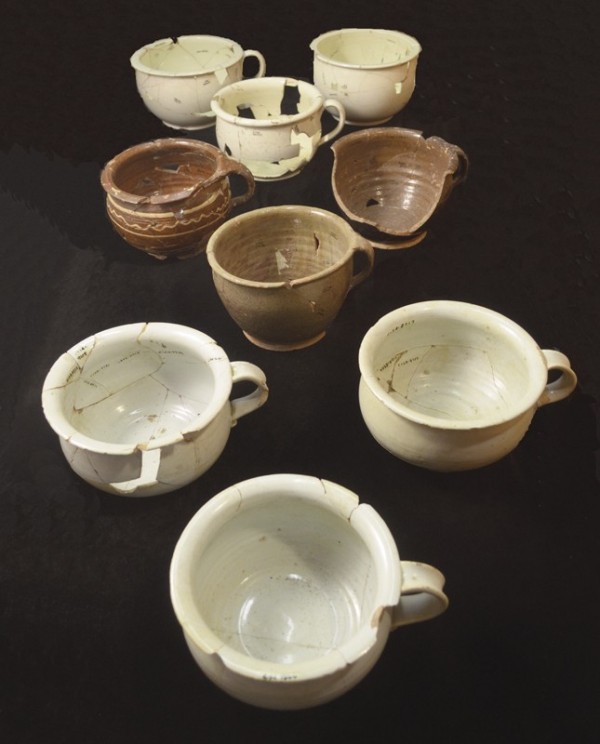
A selection of chamber pots from a ca. 1835 privy assemblage at site C13A in downtown Plymouth, Massachusetts. Foreground, delftware; center, redware; background, creamware. (Courtesy, Plimoth Plantation and Harold and Harriet Nathanson; photo, Steven Pendery.)
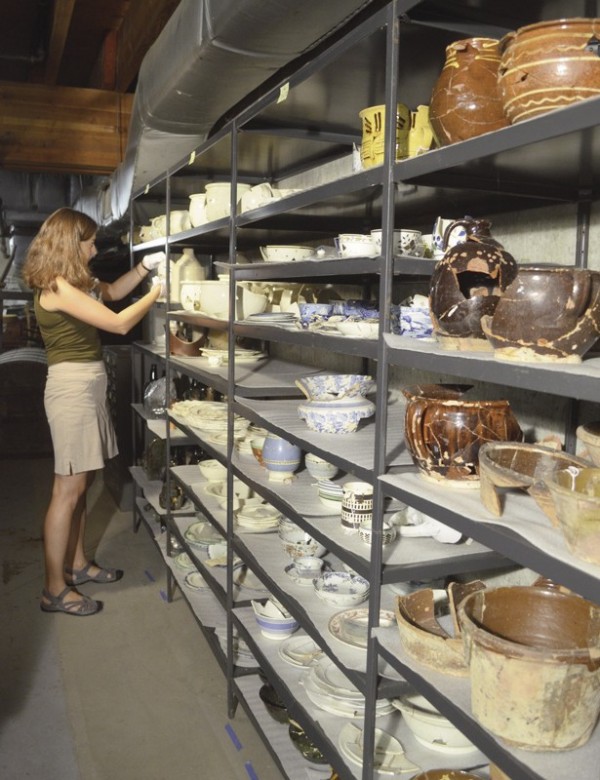
Plimoth Plantation curator Kate Ness examines vessels from a ca. 1835 privy fill excavated at Site C13A in downtown Plymouth, Massachusetts. (Courtesy, Plimoth Plantation and Harriet and Harold Nathanson; photo, Steven Pendery.)
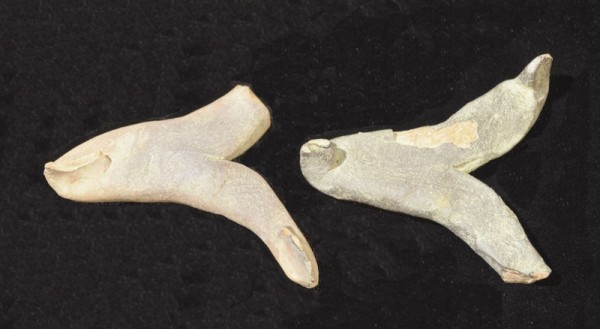
Stilts or tripods, Stephen Bradford pottery, Kingston, Massachusetts, ca. 1837–1853. Earthenware. L. (right) 3 15/16". (Courtesy, Plimoth Plantation and Jones River Historical Society; photo, Steven Pendery.) These pieces, which were recovered in 1996, were used to support wares in the kiln.
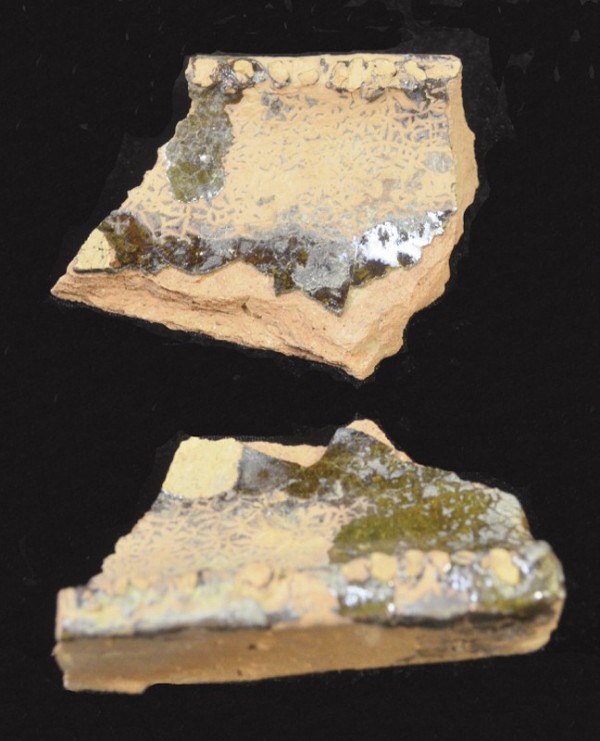
Trough-shaped setting-tile fragments, Stephen Bradford pottery, Kingston, Massachusetts, ca. 1837–1853. Earthenware with patches of lead glaze. (Courtesy, Plimoth Plantation and Jones River Historical Society; photo, Steven Pendery.) Pans were nested vertically, with their rims set on the raised edge of the tile to prevent slippage and to control the flow of liquefied lead glaze.
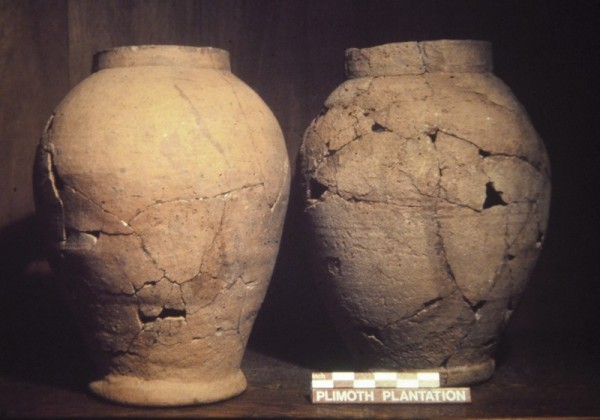
Sugar drip jars, nineteenth-century. Earthenware. H. 19 11/16". (Courtesy, Plimoth Plantation; photo, Ted Avery.)
